#Renewable energy in remote areas
Text
Breaking Barriers: The Challenge of Electrification in Remote Areas
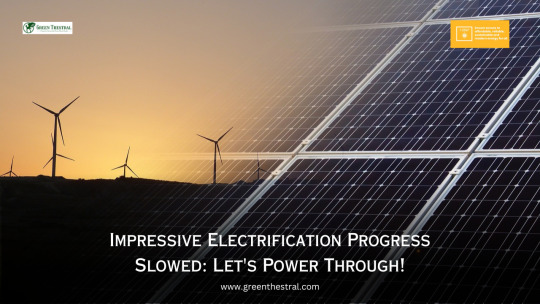
In today's rapidly evolving world, the importance of electrification cannot be overstated. Access to electricity is a cornerstone of modern living, enabling progress in education, healthcare, communication, and economic development. Over the past few decades, remarkable strides have been made in electrification efforts, but there remains a significant challenge in reaching the hardest-to-reach areas. This article explores the obstacles hindering impressive progress in electrification and sheds light on the efforts being made to overcome these challenges.
The Significance of Electrification
Electrification is a critical component of building sustainable and inclusive societies. It enhances the quality of life for people in both urban and rural areas, enabling them to access vital services and technologies. Electricity facilitates the functioning of schools, hospitals, industries, and communication networks, empowering communities to thrive and participate in the global economy. However, despite its transformative power, millions of people around the world still lack access to electricity.
The Impressive Progress
In recent years, electrification efforts have achieved remarkable progress. Governments, non-profit organizations, and private companies have collaborated to expand electricity access to remote and underserved regions. The adoption of renewable energy sources, such as solar, wind, and hydro power, has played a significant role in bringing electricity to areas with limited infrastructure. Additionally, advancements in technology and innovative micro-grid systems have made it possible to overcome geographical barriers and provide energy solutions to previously inaccessible locations.
Challenges in Reaching the Hardest-to-Reach
While impressive progress has been made, electrification in remote areas faces formidable challenges. Some of the key obstacles include:
Geographical Barriers: Many remote regions are situated in rugged terrains, such as mountains, forests, or deserts. Building and maintaining traditional power infrastructure in these areas can be prohibitively expensive and logistically challenging.
Lack of Infrastructure: Remote regions often lack basic infrastructure like roads and transportation networks, making it difficult to transport materials and equipment needed for electrification projects.
Affordability: In impoverished regions, the cost of setting up and maintaining electricity infrastructure can be a burden for both the communities and the providers.
Political and Social Instability: In certain areas, political conflicts and social unrest can hinder progress in electrification efforts, discouraging potential investors and disrupt ongoing projects.
Environmental Concerns: Balancing the need for electrification with environmental conservation is crucial. Some remote areas are ecologically sensitive, and care must be taken to ensure sustainable and eco-friendly energy solutions.
Solutions and Initiatives
Despite the challenges, numerous initiatives are actively working to bring electricity to the hardest-to-reach regions. These efforts include:
Off-Grid and Micro-Grid Systems: Off-grid solar systems and micro-grids provide localized and decentralized energy solutions, bypassing the need for extensive infrastructure. They can be tailored to suit the specific energy demands of a community.
Mobile Technology: Mobile technology has become a powerful tool in facilitating electrification. Mobile payment platforms and smart grids help manage energy distribution efficiently.
Public-Private Partnerships: Collaborations between governments, non-governmental organizations, and private companies have proven effective in pooling resources and expertise to tackle electrification challenges.
Miniaturized Technologies: Technological advancements have led to the creation of compact and efficient energy solutions, such as portable solar panels and mini wind turbines, making them suitable for deployment in remote areas.
Community Engagement: Empowering local communities to take ownership of electrification projects fosters a sense of responsibility and sustainability.
Conclusion
Impressive progress in electrification has undoubtedly improved the lives of millions, but there is still much work to be done to reach those hardest-to-reach areas. The challenge of electrifying remote regions requires innovative solutions, collaborative efforts, and a commitment to sustainable development. As technology continues to advance and awareness grows, there is hope that the barriers hindering electrification will gradually crumble, lighting up the lives of those who have remained in the dark for far too long. It is essential for governments, organizations, and individuals to come together and invest in electrification as a means of driving positive change, fostering economic growth, and leaving no one behind in the pursuit of a brighter and sustainable future.
What's In It For Me? (WIIFM)
Are you curious about the state of electrification in remote areas and the challenges hindering its progress? Discover how impressive efforts to bring electricity to the hardest-to-reach regions impact global development, the environment, and the lives of millions. Learn about innovative solutions and initiatives that can transform the future of those in need, while contributing to a sustainable and inclusive world.
Join the Movement: Let's Light Up Lives Together!
Be a part of the electrification revolution! Help us overcome the challenges of reaching remote areas with electricity. Share this article to spread awareness and inspire others to support electrification efforts. Together, we can make a difference and empower communities worldwide. Click here to learn more about how you can get involved and contribute to this meaningful cause.
Blog Excerpt
The quest for electrification in remote and underserved areas has seen impressive strides, yet it faces significant challenges that slow its progress. Access to electricity is pivotal in shaping modern living, but millions of people still lack this essential resource. This article delves into the obstacles hindering electrification, including geographical barriers, lack of infrastructure, and affordability issues. We explore the solutions and initiatives driving change, such as off-grid and micro-grid systems, mobile technology, and community engagement. By addressing these challenges head-on, we can create a brighter and sustainable future for all.
Meta Description (320 characters)
Discover the challenges impeding impressive progress in electrification efforts to reach remote areas. Explore innovative solutions and initiatives, empowering communities and transforming lives worldwide.
#Impressive progress in electrification#Electrification challenges in remote areas#Hardest-to-reach electrification solutions#Sustainable electrification initiatives#Impact of electrification on global development#Electrification and environmental conservation#Access to electricity in underserved regions#Off-grid and micro-grid systems for remote areas#Mobile technology in electrification#Empowering communities through electrification#Innovations in remote electrification#Affordable electrification solutions#Overcoming geographical barriers in electrification#Advancements in off-grid technology#Micro-grids for remote communities#Electrification challenges and opportunities#Electrification and socio-economic development#Renewable energy in remote areas#Empowering the hardest-to-reach regions#Progress in electrification initiatives#Electrification impact on education and healthcare#Electrification projects in challenging terrains#Sustainable energy solutions for remote regions#Innovations in rural electrification#Electrification's role in community empowerment#Social impact of electrification efforts#Challenges in electrification funding#Remote electrification and climate change#Importance of electrification access for all#Addressing electrification disparities
0 notes
Text
Power Up Your Wild Camping Experience: Tips for Accessing Electric Power in the Great Outdoors
Wild camping is an exciting and adventurous way to spend time outdoors. It can be a great way to disconnect from the hustle and bustle of everyday life and enjoy the beauty of nature. However, one of the challenges of wild camping is having access to electric power. In this blog post, we will explore various ways to have electric power in wild camping.
1- Use Solar Panels
One of the most…
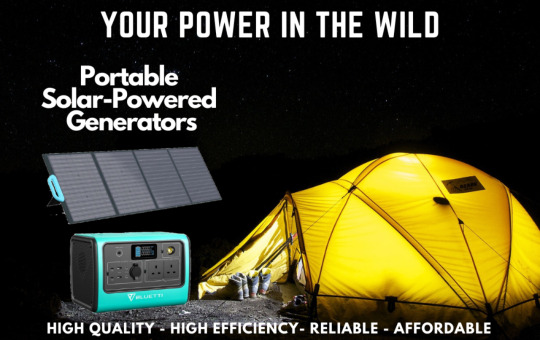
View On WordPress
#A#Battery life#Bluetti#Camping generators#Charging devices#Choosing the right size and type of camping generator for wilderness trips#Eco-friendly ways to access electric power in wild camping#Efficient charging strategies for devices in remote camping areas with limited power access#Electric power#Energy-efficient devices#Harvesting renewable energy with portable solar panels in the great outdoors#Maximizing battery life in wild camping with energy-efficient devices#No worry in the wild#Planning for power needs in wilderness camping trips: a guide to energy management#Portable power banks#Portable power banks for charging devices in remote camping locations#renewable energy#Solar panels#Sustainable sources#Sustainable sources of electric power for off-grid camping adventures#The benefits of using solar-powered devices for camping and outdoor activities#Wild camping#Wild camping electricity solutions: balancing sustainability and convenience
0 notes
Text
pluto in aquarius: a prediction of what's to come
this is a huge astrological event, pluto is moving into aquarius for the first time since the late 1700s. last time pluto was in aquarius america fought for independence from britain, uranus was discovered, the french revolution began, the bill of rights was ratified, etc.
so for day one, i want to create predictions of what is to come!
some house matters!!!
TWO PLUTO RETROGRADES WILL OCCUR - june 11th - jan 20th, 2024 is the first so we won't see too much wildness just yet as pluto will return into capricorn during this time and THE FINAL RETROGRADE BACK INTO CAPRICORN will be september 1st, 2024 - november 19th, 2024. then we are full steam ahead with pluto in aquarius until march 9th, 2043.
i personally am NOT a witch or anything wild, everything i am saying is purely theoretical - it is not fated to happen just because i am saying it. i am simply socially aware. i know what's up generally in the world today and what was up in world in the 1700s - "history typically repeats itself."
i live in the usa so my post likely will be slightly more focused there examples wise so i apologize in advance! feel free to comment, dm, or reblog with other examples from your country based on my prediction key phrases.
i am going to start light and get darker so mentally prepare yourself for that (tw: STI/STD outbreaks, war, 9/11, COVID-19, and other abrasive topics that may make people uncomfortable depending on where they are currently reading from) - but we are talking about pluto so... expect the unexpected?!
let's do this.

renewable energy sources
aquarius is electricity, light, inventions, electronics, telephones, televisions, etc while pluto can be change! i recently bought a new tv and the back of the remote has a solar panel instead of a battery pack. i do believe we will see more evolution with technology; perhaps we will see solar changed phones! otherwise pluto is also pollution and natural disasters - the climate is in crisis mode perhaps we will see more responsibility and thus changes in our sourcing of energy! example: recently i read that japan has a great source of geothermal energy. currently the conversion to using this source (instead of coal, gas, and nuclear energy) is being held up by a higher up in the hot spring business who claims switching to a new energy system "threatens centuries-old traditions" (bang - a capricorn term - tradition - so perhaps after the retrogrades are through we will see a major shift in energy sourcing).
general technological advancements/inventions
last time pluto was in aquarius the cotton gin was invented; which aided in quicker production of goods and higher demand for american cotton. i strongly believe this is a general indicator that AI is going to become an even bigger part of day to day life. i have seen AI already replace those who take orders in the panera drive thru, there is a higher demand for philosophy/english grads to help teach AI, etc. aquarius is also new teachers/occupations so AI could become the new teachers OR new careers could be coming in the area of interacting with AI generally so it gains more consciousness. so it could be AI or it could be something else that is only just a dream in the back of someone's mind at this moment in time.
altruistic extremists
we may see utopian dreamers rise up! they are likely to advocate for the deconstruction of pre-existing political institutions in favor of either self governance or egalitarian policies. they will likely do whatever it takes to make this statement; we may see more protests / political statements similar to wynn bruce's.
fanatical/extremist announcers radio/tv
we already have biased stations and channels (fox, abc, cnn, nbc, etc). we are likely to see a further rise in politically biased newscasters and announcers.
demonization of astrology
astrology is aquarian in nature but pluto is fanatics, evil, demonics, etc. the community has been saying about the next world war for a while now. we are moving out of conservative pluto in capricorn, so we may find that those of deep belief systems accusing us [astrologers] of conspiring with the devil if/when something militant arises (similar to how the tarot community gets told constantly by christians that they must be satanists).
something with birds
i don't have this nailed down yet specifically, but both aquarius and pluto are rulers of birds. aquarius is large birds while pluto is wading/swamp birds and/or flesh eating birds. no one freak out and start thinking that i am indicating something like the 1963 horror film the birds. if anything i can see more bird-spread illness and/or parasites. OR pluto can be archaeology! there may be a bird related discovery or something to do with the distant relative of the bird - aka the raptor (dinosaur related).
a new STI/STD discovery/outbreak
aquarius represents the distribution of bodily fluids while pluto is often representative of sexual activity. this could either be an outbreak because pluto can be death, extremes, catastrophes, and/or casualties OR pluto can be ph balance in the body (possible new discoveries for feminine sexual health), kidneys (perhaps a discovery will be linked to the diminished functionality associated with syphilis, hiv, etc and how to combat more symptomatic issues), and even purification (aka a cure perhaps to help viral carriers to no longer pass the sti/std to sexual partners).
collapse of congress / house of commons/representatives
i mean it only stands to reason that the bill of rights was created/approved last time pluto was in aquarius that either those rights will disappear (pluto also represents dictators) OR simply the people rise up and demolish the institution as it stands: "...whenever any Form of Government becomes destructive of these ends, it is the Right of the People to alter or to abolish it, and to institute new Government..."
airplane catastrophes
aquarius rules over planes and pluto can represent accomplices, catastrophes, casualties, b0mbs, and t3rr0r!sm. we may experience another event similar to 9/11 OR we may see air strikes in a potential world war 3 scenario.
societal change: crime, war, leadership, and more
world war 3 is on the horizon so say pluto in aquarius (probably in the wake of election year in the US - when the final retrograde into capricorn concludes). but this could also just be governmental restructuring - this could be seen as rebellions (similar to the French Revolution), the rise of organized crime if good become more scarce, religious shifts (pluto is the antichrist, aquarius is freewill (first amendment), and capricorn is the old church (christian schools of thought)), etc.
aquarian terms i can't think of change in but seem important to note / keep in mind: freethinkers, hamburg germany, heart weakness (biden - perhaps the early death of a president in office?), motion picture (already changing as more theaters close), photography, psychology (we are already starting to care more about everyone's mental health), science (general scientific discoveries?), social affairs (there is always something going on - the question is how big will this be?), society, sweden, syria, and xray.
plutonian terms i can't think of change in but seem important to note / keep in mind: abductions (aliens - ufo sights?), aliases, alibis (governmental riffing similar to how no plan was in place when for COVID-19), assass!nat!0n (hopefully not), betrayal, bootlegging (bootleg tiktok if america bans it?), cemeteries (removal of that method if too many are dying at any giving time - mass graves?), convicts (prison release due to overcrowding? the mega-prison of el salvador?), corruption (governmental likely?), demolitions, earthquakes (more environmental issues?), electrocution, executions (war?), fanatic, extremes, floods (environmental? emigration - society is aquarius after all?), liars, massacres (the rise of crime?), murder, nihilism (the rise of philosophy at the time of war?), ransom (war?), satire (rise of political satire?), stolen goods, and taxes (trump-esque no?).

like what you read? leave a tip and state what post it is for! please use my “suggest a post topic” button if you want to see a specific post or mythical asteroid next!
click here for the masterlist
want a personal reading? click here to check out my reading options and prices!
© a-d-nox 2023 all rights reserved
#astrology#astro community#astro chart#astro placements#natal chart#pluto#pluto in capricorn#pluto in aquarius#astrology transits#retrograde#pluto retrograde
929 notes
·
View notes
Text

Geothermal area, Hveravellir, Iceland
Hveravellir is a remote location in the heart of the Icelandic highland. Iceland’s position on the mid-Atlantic ridge with its volcanic activity provides an opportunity to tap into Earth’s heat for sustainable energy. Iceland is a frontrunner in using this geothermal energy as a renewable and sustainable source. Geothermal power plants convert Earth’s heat into steam which propels electricity turbines, June 2023
Photograph: Pawel Zygmunt
Environmental photographer of the year 2023
#pawel zygmunt#photographer#environmental photographer of the year#geothermal area#hveravellir#iceland#aerial photography#nature
36 notes
·
View notes
Text

Excerpt from this story from Inside Climate News:
When Peter Else left the University of Arizona in 2005 to live in the San Pedro Valley full time, he planned to spend his retirement farming in one of the most ecologically intact landscapes left in southern Arizona, where the nearby river remains undammed and giant cactuses fill the space between the Galiuro and Rincon mountains.
But Else, who previously directed the Tucson Area Agricultural Centers at the University of Arizona, soon found himself in the middle of one of the most consequential debates over developing green spaces for green energy. For nearly a decade, he has been fighting the SunZia project—a transmission line connecting 3,000 megawatts of clean energy generated by wind farms in New Mexico to the power grid. The transmission line was routed largely along highways in New Mexico and Arizona but detoured into the San Pedro Valley for roughly 50 miles, cutting through a landscape that for decades avoided most of the impacts of human development. Other routes identified by developers were deemed to have greater negative impacts by federal regulators, while the company said building along existing infrastructure was too costly.
“I’ve never done anything like that before in my life,” Else said of becoming a citizen intervenor during the Arizona Corporation Commission’s (ACC) permitting process for SunZia, a role that allows citizens impacted by a project to directly participate in its permitting by providing sworn testimony and cross-examining witnesses. “I had no idea what I was getting into.”
Fifteen years since the project was first proposed and nearly a decade after state regulators began reviewing the project, Else is still involved, suing the ACC, which regulates state utilities, over its issuing of a certificate of environmental compatibility (CEC) to SunZia. The suit argues that the development has fundamentally changed since it was narrowly approved in 2016 and no longer benefits Arizona.
When SunZia was approved, the project planned to build two side-by-side power lines and connect to a planned substation in Bowie, Arizona. One of the lines built would be an alternating current line, enabling other energy projects in southern Arizona to connect to the grid, while the other would be a direct current line, which doesn’t easily allow for interconnection and is best used for sending large amounts of energy over long distances. But since Pattern Energy purchased the project in 2022, only the DC line is being built after the ACC agreed to separate the permits for both of the lines. The AC line currently lacks the funding to begin construction, and all of the project’s wind energy is slated to be sold in California, where it’s worth more.
“As a matter of law, the Commission cannot approve a CEC when on one side of the balance is zero (no Arizona purchasers) or noneconomical power, and on the other side is environmental and ecological harm,” the lawsuit reads. “This is an independent reason to remand: the Commission must require Pattern to put on evidence of actual need in Arizona.”
Else’s lawsuit is just the latest in a series of challenges facing SunZia, the biggest renewable energy project in U.S. history, despite construction on the project having already begun. Fights over the development are playing out in state and federal courts.
Transmission lines are vital to the energy grid and a major component of the transition away from fossil fuels. The lines send energy, often generated in remote places, over long distances, typically to major urban centers. But building them can be a long and tedious process, involving regulators from various states and federal agencies and the consultation and feedback of local and tribal communities, environmental groups and others.
4 notes
·
View notes
Text
Once more California leads the way to The Future!
16 notes
·
View notes
Text

Looking Down on the Andes
This oblique photograph of the Chilean Andes in South America was taken by an External High-Definition Camera (EHDC) on the International Space Station. These high-elevation mountains reach up to 6,962 meters (22,840 feet) above sea level (Mount Aconcagua) and serve as a natural border between Chile, Argentina, and Bolivia.
The Andes mountain chain causes a rain shadow effect that results in minimal precipitation in the Atacama region of Chile. This area—known as the Atacama Desert—is widely recognized as one of the driest places on Earth. Some areas of the Atacama are touched by rain only four times a century. Other areas have never received rainfall for as long as records have been kept.
Precipitation is more abundant toward the east, where moisture is carried by winds from the interior of South America toward the eastern slopes of the Andes. Notice the shift from the moist Amazon basin rainforest (dark green) at the top of the image to dry desert conditions (brown) approaching the coast.
The desert climate is conducive to the formation of salt flats, which are scattered throughout the landscape. Among them are Bolivia’s Coipasa and Uyuni Salt Flats (known as Salar de Coipasa and Salar de Uyuni). Uyuni is the world’s largest salt flat and spans about 9,600 square kilometers (3,700 square miles).
Uyuni and other Atacama salt flats contain high concentrations of minerals such as lithium, potassium, and magnesium in their brines. These brines are often mined for their minerals as resources for the medical, electronic, and renewable energy industries.
Astronaut photograph ISS069-E-65 was acquired on March 28, 2023, with a Nikon D4 digital camera using a focal length of 56 millimeters. It is provided by the ISS Crew Earth Observations Facility and the Earth Science and Remote Sensing Unit, Johnson Space Center. The image was taken by a member of the Expedition 69 crew. The image has been cropped and enhanced to improve contrast, and lens artifacts have been removed. The International Space Station Program supports the laboratory as part of the ISS National Lab to help astronauts take pictures of Earth that will be of the greatest value to scientists and the public, and to make those images freely available on the Internet. Additional images taken by astronauts and cosmonauts can be viewed at the NASA/JSC Gateway to Astronaut Photography of Earth. Caption by Amber Turner, Jacobs JETS Contract at NASA-JSC.
5 notes
·
View notes
Text







"Explore an innovative approach to sustainable energy at UBetter Energy! Discover how we're revolutionizing the renewable energy landscape with cutting-edge solutions. Click here https://www.ubetterenergy.com/ to delve into a world of cleaner, efficient power that's shaping a brighter future!"
# Emerging trends in solar battery energy storage systems
# Residential impact and role of solar batteries in energy solutions
# Commercial and industrial applications of solar battery systems
# Contributions of solar battery storage to grid stability
# Potential applications of solar batteries in rural and remote areas
# Urban integration and benefits of solar battery systems
# Environmental impact of solar battery energy storage systems
# Solar batteries' contribution to mitigating climate change
# Lifecycle analysis of solar battery technology
# Economic viability and cost-effectiveness of solar battery solutions
2 notes
·
View notes
Text
Offshore wind turbines are becoming an increasingly popular source of renewable energy, as they harness the power of wind in the open ocean to generate electricity. In this article, we will explore the size, capacity, and operation of offshore wind turbines, as well as the role that workers play in maintaining them.
Offshore wind turbines are typically much larger than onshore turbines, as they need to withstand more extreme weather conditions and generate more electricity to justify the cost of installation. The largest offshore wind turbines currently in operation are over 200 meters tall, with blades that can span up to 100 meters in length. These massive turbines can generate up to 12 megawatts of electricity each, which is enough to power thousands of homes.
Offshore wind turbines are typically installed on floating platforms or fixed foundations that are anchored to the ocean floor. Maintenance workers access the turbines via boats or helicopters, as they are often located in remote and hard-to-reach areas. Workers typically undergo specialized training to work on offshore wind turbines, as the environment can be hazardous and challenging.
The maintenance of offshore wind turbines is crucial to their longevity and performance. Workers are responsible for inspecting and repairing the turbines on a regular basis, ensuring that they are running smoothly and efficiently. This can include tasks such as blade repair, electrical maintenance, and cleaning the turbines to remove debris and prevent corrosion.
Despite the challenges of working on offshore wind turbines, many workers find the work to be rewarding and fulfilling. The development of the offshore wind industry has created new job opportunities in areas such as engineering, manufacturing, installation, and maintenance. In addition, offshore wind turbines are helping to reduce our dependence on fossil fuels and combat climate change, making the work even more meaningful.
In conclusion, offshore wind turbines are a vital source of renewable energy that are capable of generating large amounts of electricity. They are typically much larger than onshore turbines and require specialized maintenance and inspection. Workers play a crucial role in ensuring the safety and efficiency of offshore wind turbines, and the development of the industry has created new job opportunities in a variety of fields. As we continue to transition to a cleaner and more sustainable energy future, offshore wind turbines will undoubtedly play a crucial role in meeting our energy needs.
7 notes
·
View notes
Text
Chauncey Man San Leandro: Electricity Generation Methods
Electricity can be generated through various processes, each with its own advantages, disadvantages, and applications. Here are some common types of electricity generation processes shared by Chauncey Man San Leandro:

Fossil Fuel-Based Generation:
Coal Power Plants: These plants burn coal to produce steam, which drives turbines connected to generators.
Natural Gas Power Plants: Natural gas is burned to spin turbines and generate electricity.
Oil Power Plants: Similar to natural gas plants, but they use oil as the fuel source.
Nuclear Power Generation:
Nuclear reactors use controlled nuclear fission reactions to heat water and produce steam that drives turbines connected to generators.
Renewable Energy Generation:
Solar Power: Photovoltaic (PV) cells convert sunlight into electricity.
Wind Power: Wind turbines capture kinetic energy from the wind and convert it into electricity.
Hydropower: Water flowing through dams or turbines generates electricity.
Geothermal Power: Heat from the Earth's core is used to produce steam that drives generators.
Biomass Power: Organic materials like wood, crop residues, and waste are burned or converted to biogas to generate electricity.
Hybrid Systems:
Some power generation systems combine renewable sources (e.g., solar and wind) with energy storage systems (e.g., batteries) to provide continuous power.
Tidal and Wave Energy:
Tidal and wave energy generators harness the kinetic and potential energy of ocean tides and waves to generate electricity.
Fuel Cells:
Fuel cells combine hydrogen and oxygen to produce electricity, with water as the only byproduct.
Cogeneration (Combined Heat and Power - CHP):
Cogeneration systems produce electricity and useful heat simultaneously, improving overall energy efficiency.
Thermoelectric Generators:
These generators convert heat directly into electricity using temperature differences, often in remote or small-scale applications.
Microgrids:
Microgrids are localized electricity generation and distribution systems that can incorporate various energy sources, including renewables, to provide reliable power to specific areas.
Ocean Thermal Energy Conversion (OTEC):
OTEC systems use temperature differences between warm surface water and cold deep water to generate electricity.
Radioisotope Thermoelectric Generators (RTGs):
RTGs use the heat generated by the radioactive decay of isotopes to produce electricity, often used in space probes and satellites.
Piezoelectric Generation:
Piezoelectric materials generate electricity when subjected to mechanical stress or vibration, used in some specialized applications.

Chauncey Man San Leandro's final words, The choice of electricity generation method depends on factors such as resource availability, environmental impact, cost, and energy demand. Many regions are transitioning to cleaner and more sustainable energy sources to reduce carbon emissions and combat climate change.
#chauncey man san leandro#electricity#electricity generation#power generation#power house#thermal plant#electricity grid#high tension power#USA#california#environment
2 notes
·
View notes
Text
01-08-2023
Long overdue for an update! A lot has happened so I'll try my best to catch y'all up.
I've been feeling a bit down, I think that was partly due to some unmet expectations with the WWOOFing. After the long hikes and the eye infection I was looking forward to having a relatively stable place to stay, but while it was stable, it was not comfortable. The bush cabin they had said I could stay in was falling apart and mouldy, so I ended up still sleeping in the van the whole time. The bathroom was cold and covered in mud and spiders, and the family, while very kind, needed their privacy. Their kids required a lot of attention, so there wasn't much to do in terms of socialising, let alone with peers, as I was the only WWOOFer there and the area was quite remote. So, I ended up working alone most days. The only company I had were Luna and Uenuku (Te Reo Māori for 'rainbow'), the family's two adorable collies:

Uenuku was Luna's daughter, and they had a unique way of playing: Luna would forage around the large garden for a pinecone and drop it near me. Uenuku would alert me to it by stomping on the ground. I was supposed to pick it up and throw it as far as I could, but Luna was the only one interested in chasing it: Uenuku's eyes were locked on her mother instead. Her mission was to stop Luna from catching the pinecone in the first place, but she never managed! I tricked them a couple times by throwing it backwards instead of forwards, which resulted in two very confused dogs. The most endearing was when I was working in a delicate bed and couldn't risk them darting through and damaging the plants, so I'd have to disappoint them and ignore the pinecone at my feet. Of course they couldn't understand me telling them I couldn't play with them, so they'd watch me work expectantly, and every weed I pulled out of the bed and tossed into the wheelbarrow was narrowly followed with their eyes in hopes they'd get to chase one of those instead. Eventually they'd get the message and just lie down, chilling in the morning sun with me until it was time for lunch.
I'd enjoy the family's cooking with homegrown veggies, and after that I'd have the rest of the day to myself. However, often I was quite low on energy by then and would take a nap or just knit a little, which felt a bit like a waste because I was staying in such a beautiful area. This leads me to the other reason I think I haven't been feeling my best: it feels like I've got a case of travel-burnout. I'm tired a lot, and often find myself fantasising about being home and telling stories to loved ones. About making necklaces out of the shells I found on the beaches and wearing them to social events with all my Dutch friends. About being done. The incredibly beautiful nature has become normal to me, so I didn't undertake a lot after work, because what's the point? There's beauty everywhere, and I've seen it already. That way the days blend together quite easily and now that I'm moving on, it feels like I was there much longer than a week and a half.
Besides all the above, I truly enjoyed the work. I learned a lot about recognising plants, fertilising soil, and even dwelling construction. It was nice to just be out in the fresh air, working with my hands, not looking at a screen. And after having some expectations laid on me for a little while, I have a renewed appreciation for traveling on my own again!
Another bright side was getting to join the local piano man in a sing-along night in the Mussel Inn twice during my stay. This is an adorable pub right off the state highway with a big fireplace and home-brewed beer and kombucha (complete with punny names, see below) where people from all over the bay gather on Monday nights to sing their lungs out to classics such as 'Hey Jude', 'Waltzing Mathilda' and 'Hit the road, Jack'. I loved being immersed in the warmth and the music, and they served the best vegan chocolate cake :)

On the days I did gather enough energy to go out hiking, I did see stunning sights:
Waikoropupū springs, where ~10 m3 of some of the clearest water in the world bubbles up from the ground every second. It's a very sacred place and it's beautiful to see how it's being protected and preserved
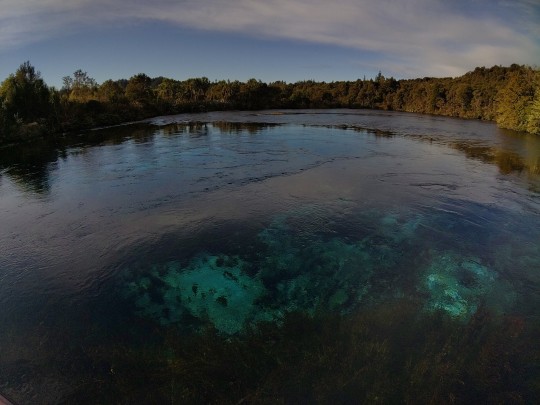
Onetahua or Farewell Spit, the Northernmost tip of Te Waipounamu
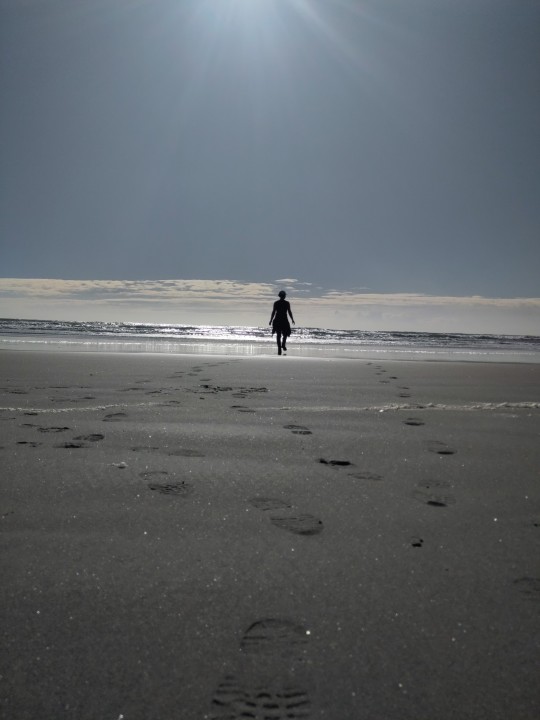

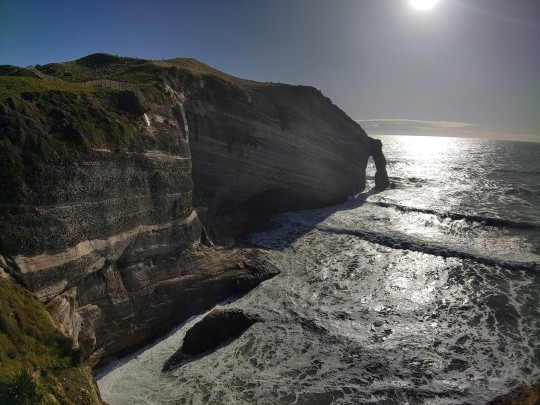
Wharariki beach, recognisable to the keen eye as the location where the iconic lock screen background for Windows 10 was made

(I saw a seal and thought it was dead but other hikers reassured me it was just sound asleep! 🤗)
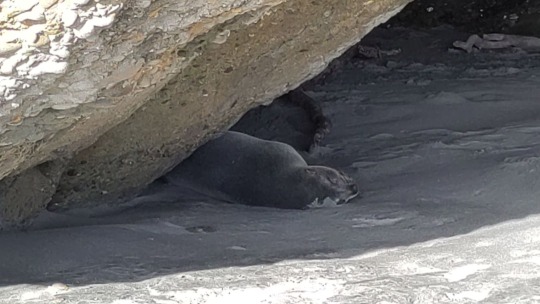
The Grove, a small but impressive nature reserve with artistic Karst rock formations
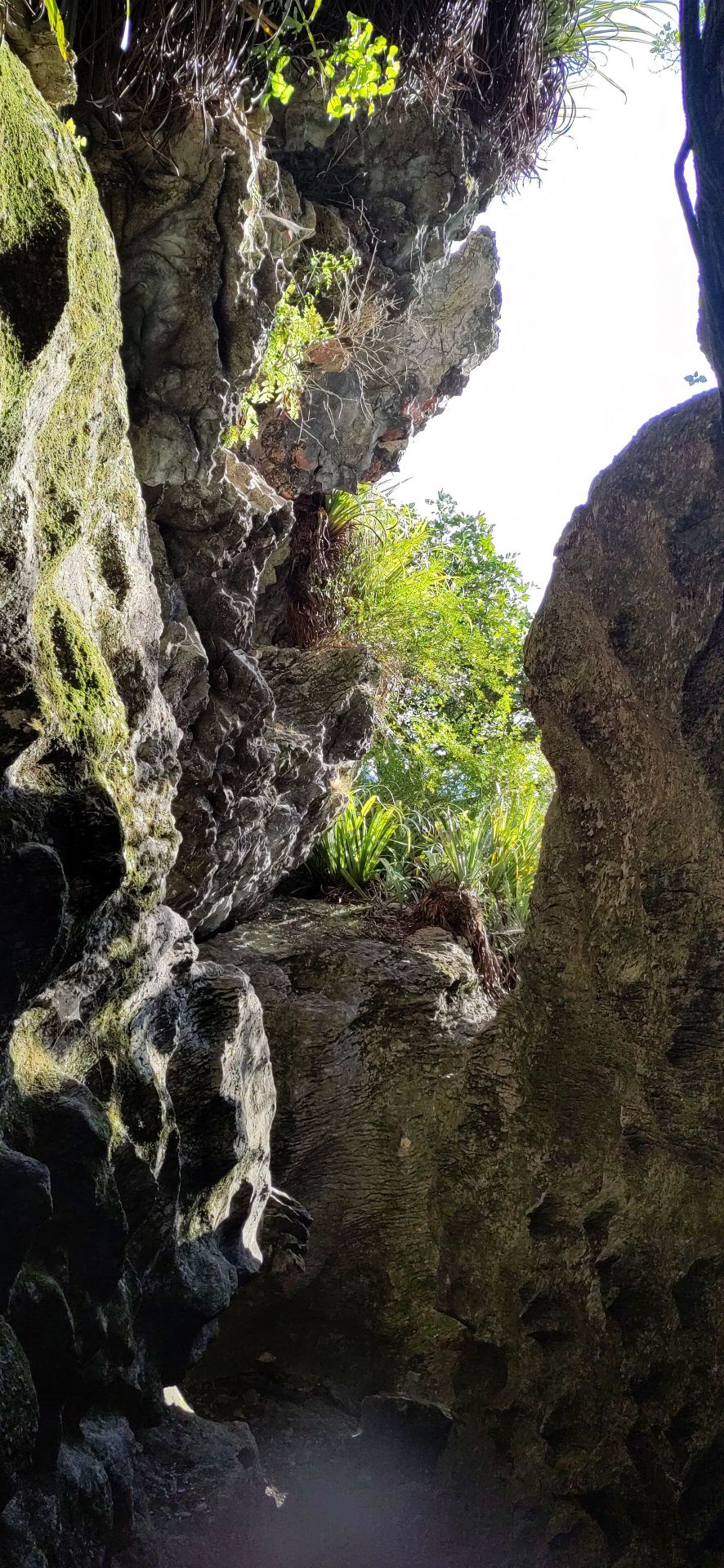
And finally, today I hiked the Pupu valley. Light clouds were passing over the hilltops and raining out softly, and together with the morning sun they created a bright masterpiece:

I didn't see another soul the entire hike, save for the robins, shags, tūi, kereru, and even a little kingfisher! It was refreshing and invigorating.
I spent my afternoon finally properly exploring Tākaka. My biggest recommendation for anybody going there is Trash Palace, an op shop where every article of clothing only costs $1! I splurged a little and spent 5 whole dollars 🤭
So, what now?
Despite feeling homesick, I'm not about to turn around and head home. I'm trying to reconnect with the mindset that this is the holiday part of the working holiday, I am here for myself and nobody else, and I'm here to have a good time. So I'll be heading back to Whakatū to stock up on Dutch liquorice from the international store, rest up, and then make my way further South, probably along the East coast. I've posted some requests online asking if any other van dwellers are in the area, and if so, whether they'd be interested in forming a caravan. I really feel the need to connect with other travelers, and it doesn't happen as naturally now as on other trips, when I used public transportation and stayed in hostels. Those are great places to meet people, but of course I'm not using them while I have Elrond. Still figuring out how to feel a little less alone on the road!
3 notes
·
View notes
Text
The Evolution of Power Line Systems : Supporting Industries & Businesses
Electricity is the most important of our day to day life. Right from driving industries to powering our homes, it has turned to be the integral part of our daily existence. But the way the electricity is generated and distributed has changed significantly over the last few years. The evolution of power line systems from AC to DC is one of the most crucial changes.
Power line systems are of immense importance. Explore how it supports industries and businesses:
Supporting Economic Growth:
When it comes to powering operations, businesses and industries rely majorly on power line systems. The systems are designed to allow smooth functioning of offices, plants, offices, and other business operations. They contribute to economic growth and development.
Enabling Electricity Access:
Power line systems are used to transmit electricity from power generation plants to businesses, homes and industries. Without these innovative machines, there is no possibility of electricity access. Our lives would be vastly different.
Improving Quality of Life:
No doubt, electricity powers our homes by offering heating, lighting, cooling, and other important services. The role of power line systems is to make sure that we have access to constant electricity, which is essential to maintain a high standard of living.
Ensuring Energy Security:
Power line systems ensure energy security, thereby playing a significant role. They allow transmitting electricity across long distances. So, they provide access to remote areas and making sure the demand for electricity is met even during peak times.
Enabling Technological Advances:
The emergence of new technologies like renewable energy sources and electric vehicles requires efficient power transmission systems. This is where the power line systems come to play a pivotal role. They are essential for the growth and success of these technologies.
Conclusion
To sum up, power line systems are playing a very important role in our day-to-day life. They support economic growth, improve the quality of life, enable technological advances, and ensure energy security. As our society is developing, so is the demand for electricity. As a consequence, the power line systems will be playing a significant role in our power systems.
2 notes
·
View notes
Link
#freecourse#course#elearning#free online courses#renewable energy#certificates#usa#uk#india#australia#canada#sustainability
2 notes
·
View notes
Text
Efficient solar panel for home
Solar power for PV panel
PV panel in London Solar power starts with the sunlight. Photovoltaic panel (also referred to as "PV panels") are made use of to convert light from the sunlight, which is made up of particles of power called "photons", right into electrical energy that can be made use of to power electric loads. A solar panel can be made use of for a variety of applications including remote power systems for cabins, telecommunications devices, remote sensing, and naturally for the production of electrical energy by property and business solar electrical systems. In a healthy grid-connected solar installment configuration, a solar array generates power during the day that is after that made use of in the residence at night. Internet metering apps enable solar generator owners to make money if their system produces even more power than what is required in the residence. Utilizing photovoltaic panels is a very sensible way to create electrical energy for many applications. A solar electrical system is potentially cheaper by reducing your electrical energy bills and can offer power for upwards of 3 decades if appropriately maintained. With the introduction of worldwide climate change, it has ended up being more important that we do whatever we can to lower the pressure on our environment from the emission of greenhouse gases by reducing your carbon impact. Photovoltaic panel have no relocating components and call for little upkeep. They are ruggedly developed and last for years when appropriately maintained. Last, however not least, of the advantages of photovoltaic panels and solar power is that, once a system has paid for its initial installment expenses, the electrical energy it produces for the remainder of the system's life-span, which could be as much as 15-20 years depending upon the quality of the system, is totally free! Prices for photovoltaic panels has decreased substantially in the last couple of years. This is fantastic because, combined with appropriate rewards, NOW is the very best time ever to buy a solar power system. As well as consider this: a solar power system upfront costs regarding the same as a mid-sized vehicle! Obviously, you would certainly require to compare the expense of a solar installment versus the economic advantages of the decrease in electrical energy use from the power energy grid. A solar company market photovoltaic panels and offer solar panel installment along with photovoltaic cleaning and repair service solutions. The solar company will be able to recommend you regarding solar electrical energy, readily available solar tax credits or solar loans amongst various other things. Area is a key consideration. The typical roof solar system size is around 3-4kW and this will typically take up around 15-20m2 roof location. An unshaded, South facing roof is suitable for optimal electric output. East or West facing roof coverings might still be thought about, however North facing roof coverings are not advised. A system facing East or West will produce around 15-20% less power than one facing directly South. Any type of neighboring structures, trees or chimneys might shade your roof and have a unfavorable influence on the performance of your roof solar system. Solar PV panels are thought about 'permitted growths' and typically do not call for planning approval. If you're preparing to set up a solar PV system in your home, you have to register it with your Distribution Network Operator (DNO).
solar systems
solar panels
solar panel
solar power
solar panel install
renewable energy
solar garden lights
solar install
solar panels installation
solar panels install
solar install
solar energy
solar panel in london
https://bestvaluesolarpanelsforhomelo657.blogspot.com/
https://bestvaluesolarpanelsforhomelo657.blogspot.com/2022/10/best-value-solar-panels-for-home-london.html
https://solar-panels-are-efficient.tumblr.com/post/699463894257876992/efficient-solar-panel-for-hom
https://efficientsolarpanelsnearmeinlondon.blogspot.com/2022/10/efficient-solar-panels-near-me-in-london.html
https://solar-power-is-the-solution.tumblr.com/post/699460892325183488/green-energy-solar-panel-in-l
https://efficientsolarpanelforhomeinlondon.blogspot.com/
2 notes
·
View notes
Text
Excerpt from this story from Inside Climate News:
The four western states that have traditionally exported large amounts of electricity generated with fossil fuels to neighboring states are poised to draw tens of billions of dollars by exporting clean energy across state lines, but only if the region can successfully expand the vast network of interstate transmission lines needed to distribute the electricity, according to a new study released Wednesday by RMI, the clean energy research and advocacy group.
At stake is a market for electricity from Wyoming, Colorado, New Mexico and Montana that could grow to nearly $50 billion by 2050 or dwindle to just $3 billion if more transmission lines aren’t built. The economic impacts could be far-reaching, not just for those four states, but the entire Western U.S. If the entire region was able to coordinate interstate transmission lines, for example, it could reduce the cost of shifting to a carbon-free grid by 30 percent, according to the report, saving billions of dollars for ratepayers across the West and enabling states to better meet their clean energy goals.
“The larger area you plan over, the larger the savings,” said Tyler Farrell, a senior associate at RMI’s carbon-free electricity program and co-author of the study.
Renewable energy projects are booming in the West, with vast solar fields, wind farms and other clean energy technologies coming online or being proposed across the region. The Biden administration has said the 245 million acres of public lands overseen by the Bureau of Land Management are key to the nation’s energy transition away from fossil fuels, with rules in place to streamline development.
But getting more clean energy to where it’s needed isn’t just a matter of building more facilities to generate it—it also requires new transmission lines to distribute the electricity, and as the RMI study found, potentially sell the excess to the highest bidder.
Transmission lines are the backbone of the grid, acting as highways that connect the source of electricity to where it is used. With remote solar and wind farms developing over vast expanses far from existing transmission infrastructure, building new lines is critical to the nation’s transition away from fossil fuels, and one of the biggest obstacles to the adoption of more clean energy in the U.S., especially in the West, where interstate lines need to cross vast stretches of federal, state, municipal, tribal and private lands, and can often run into the challenging permitting processes and pushback from those living along a project’s route.
As fossil fuel plants go offline, space opens up on transmission lines for renewables. But that won’t satisfy growing electricity demand, such as from AI data centers and charging stations for electric vehicles, or connect renewable energy projects that are being built in places where transmission lines don’t yet exist.
3 notes
·
View notes
Text
Embrace the Aroma: Discovering Southern Pines' Top Coffee Haunts for Remote Work.
In the quaint town of Southern Pines, North Carolina, where the charm of small-town living meets the vibrancy of modern amenities, finding the perfect coffee shop to set up your remote office is a delightful adventure. Whether you're a digital nomad, a freelancer, or a remote worker seeking a change of scenery, Southern Pines, North Carolina offers a variety of coffee shops with distinct atmospheres and flavors to fuel your productivity. Here's a curated list of the best coffee shops in Southern Pines, North Carolina to inspire your remote work experience:
1. Swank Coffee Shoppe & Handmade Market
Located in the heart of downtown Southern Pines, Swank Coffee Shoppe & Handmade Market combines the aroma of freshly brewed coffee with the charm of a local artisan market. This cozy establishment offers a diverse selection of specialty coffee drinks, from classic espresso beverages to unique seasonal blends. With ample seating options, including cozy couches and communal tables, Swank provides an inviting space for remote workers to plug in their laptops and immerse themselves in creativity.
2. Broad Street Bakery & Cafe
Nestled on the bustling Broad Street, Broad Street Bakery & Cafe is a favorite among locals and visitors alike. Beyond its delectable pastries and savory sandwiches, this charming cafe boasts a welcoming ambiance ideal for remote work sessions. Whether you prefer to bask in the natural light streaming through the windows or retreat to a quiet corner for focus, Broad Street Bakery offers a conducive environment for productivity. Don't forget to indulge in their signature coffee blends and freshly baked goods to fuel your workflow.
3. Betsy's Crepes
For a unique remote work experience, look no further than Betsy's Crepes. This cozy cafe specializes in sweet and savory crepes made with locally sourced ingredients, adding a delicious twist to your workday routine. With its intimate setting and laid-back atmosphere, Betsy's Crepes provides a refreshing change of pace for remote workers seeking inspiration. Pair your favorite crepe with a freshly brewed cup of coffee or artisanal tea, and savor the flavors while tackling your tasks with renewed energy.
4. Java Bean Plantation Cafe & Roastery
If you're passionate about coffee and sustainability, Java Bean Plantation Cafe & Roastery is a must-visit destination in Southern Pines. This eco-friendly cafe sources its beans from ethical producers and roasts them in-house to perfection, ensuring a flavorful and environmentally conscious coffee experience. Settle into one of their cozy nooks or outdoor patio seating areas, and enjoy the soothing ambiance as you sip on a meticulously crafted cup of coffee. With high-speed internet access and ample power outlets, Java Bean Plantation Cafe provides an ideal setting for remote work sessions with a conscience.
5. The Ice Cream Parlor & Coffee Shoppe
For a dose of nostalgia paired with exceptional coffee, look no further than The Ice Cream Parlor & Coffee Shoppe. Housed in a charming historic building, this beloved establishment offers a cozy retreat for remote workers seeking inspiration. Indulge in their artisanal coffee blends, expertly brewed to perfection, as you soak in the vintage charm of the surroundings. Whether you opt for a classic drip coffee or a specialty espresso drink, The Ice Cream Parlor & Coffee Shoppe promises a delightful experience that transcends time.
In conclusion, Southern Pines, North Carolina, boasts a vibrant coffee culture with a diverse array of coffee shops tailored to the needs of remote workers. Whether you're craving a cozy ambiance, sustainable practices, or culinary delights, the coffee shops in Southern Pines offer something for everyone. So, pack your laptop, grab your favorite mug, and embark on a journey of productivity and inspiration in this charming Southern town.
0 notes